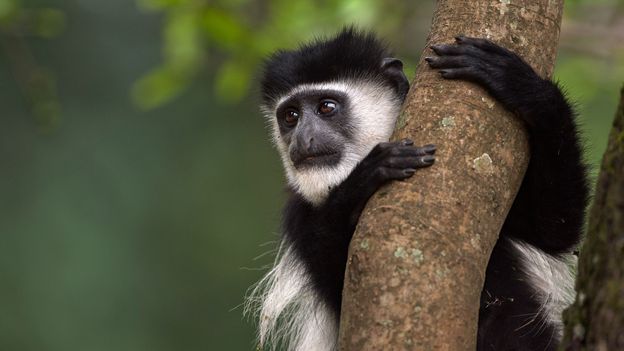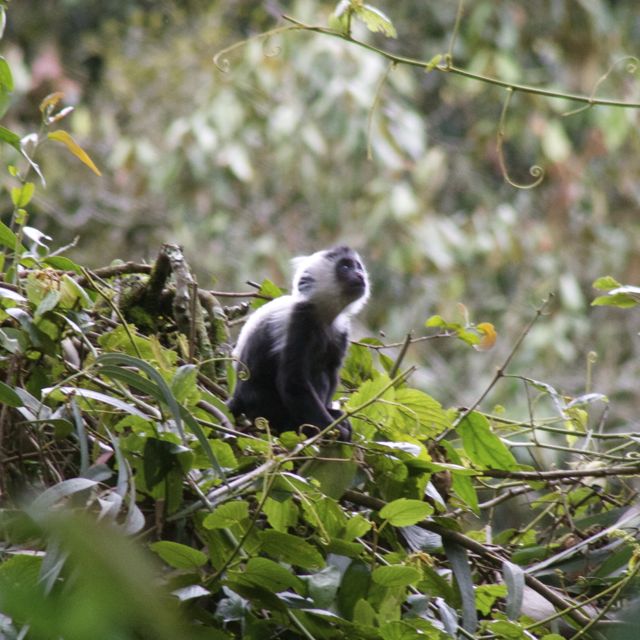

Ngogo is no exception: we have documented predation on 11 species, including all the other diurnal primates, but the great majority of hunts and over 80% of kills are of red colobus.

We have long known that chimpanzees hunt a variety of vertebrate prey and that they particularly hunt red colobus monkeys wherever the two species co-exist. Other notable Ngogo research findings, some new and others of which extend the known range of variation in chimpanzee behavior and/or help to answer important evolutionary questions, include:Ĭurrent alpha male Miles (right) sharing meat with another male, Lofty.

mucuso, which does not fruit seasonally and which produces enormous fruit crops, some of which are available most of the time. Fruit availability varies less at Ngogo, and the chimpanzees there have abundant fruit for a greater proportion of the time than those at Kanyawara. Most important among these is the giant fig Ficus mucuso, which reaches relatively high density at Ngogo and is the top food in the chimpanzees’ diet there, but does not occur at Kanyawara. Much of the diet at Ngogo comes from tree species that are rare or absent at Kanyawara despite the close proximity of the sites. Long-term data on chimpanzee feeding ecology and on the density and phenology (schedules of flowering, fruiting, and leaf production) go far toward explaining the astonishing differences in community size and population density between Kanyawara and Ngogo. The Ngogo community’s home range is about the same size as that of the Kayawara community, which means that population density is three times higher at Ngogo. In contrast, the Kanyawara community has fluctuated between 44-52 during the course of research there, and average community size at all research sites is 50-60 (including about 8 adult males), while the largest previously documented community, Mahlae “M Group”, reached 114 before declining to 70-80 individuals. As of September, 2011, the Ngogo community had 166 members, including 32 adult males and 50 adult females these numbers are unprecedented. Perhaps the most stunning research result of the Ngogo Chimpanzee Project has been simply documentation of the extraordinary size and the composition of the chimpanzee community there and of the concomitant extent of variation in community size and population density within Kibale. Ngogo researchers contribute importantly to protection of the chimpanzees and their habitat both by their presence and by their financial support for local and Uganda Government protection and conservation efforts. The large community size means that social dynamics there are particularly complex at Ngogo correspondingly, research there has greatly expanded our knowledge of the range of variation in chimpanzee social behavior and ecology. Among others, these have included male social relationships and social networks female social relationships mating behavior and influences on male reproductive success effects of kinship on social behavior influences on hunting frequency and success and on meat sharing the impact of predation by chimpanzees on the local red colobus monkey population and the function of inter-group aggression in chimpanzees. The Ngogo chimpanzees are well habituated to the presence of observers, which has allowed researchers to collect extensive and detailed information on many topics. Ngogo is particularly favorable habitat for chimpanzees, which helps to explain why such a large community can exist and why population density there is three times as high as at the nearby site of Kanyawara, the second long-term research site in Kibale. The chimpanzee community (social group) at Uganda, which has over 160 members, is by far the largest ever known. Jeremiah Lwanga (Project Manager and now also Director of MUBFS), have maintained a continuous research presence at the site since then. and Post-doctoral students, Ugandan Research Assistants, and Dr. David Watts (Yale University) and John Mitani (University of Michigan) started the Ngogo Chimpanzee Project in 1995 and, with the help of Ph.D.


 0 kommentar(er)
0 kommentar(er)
